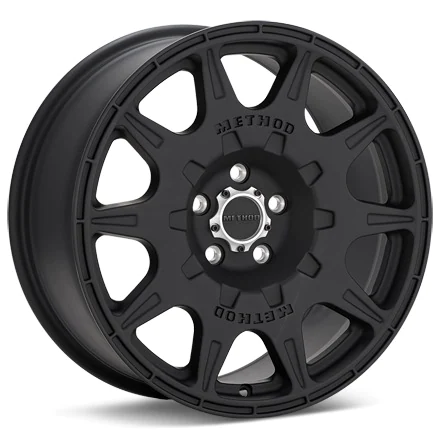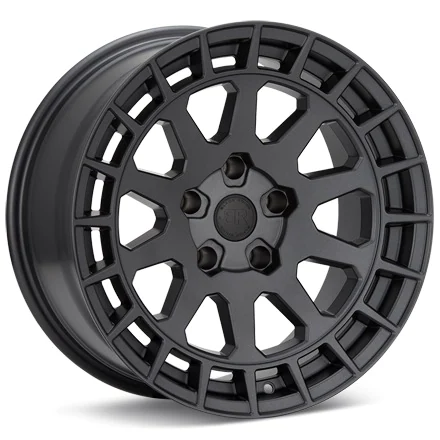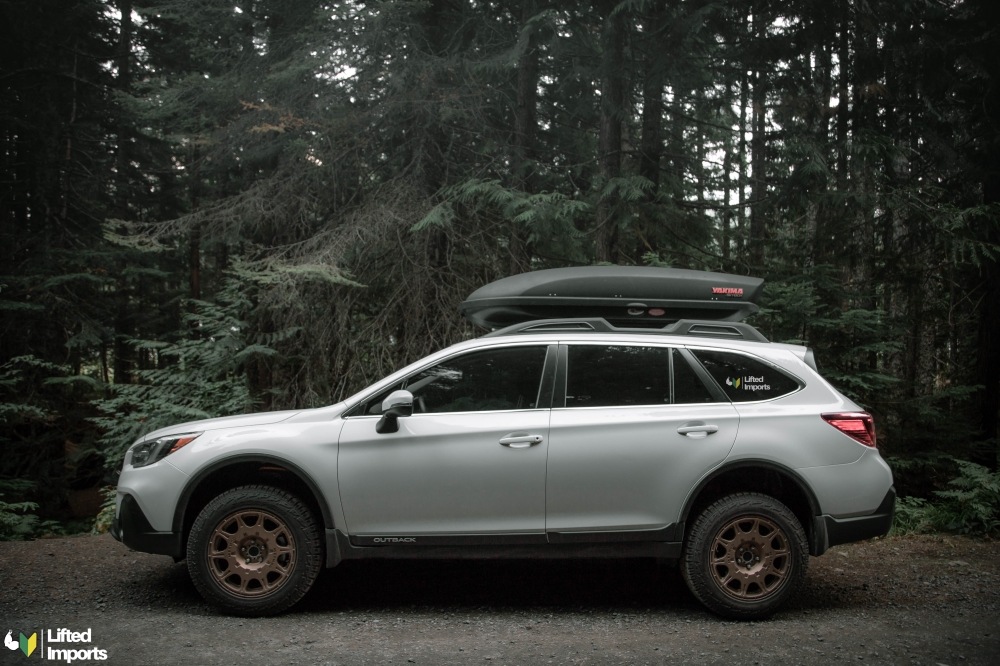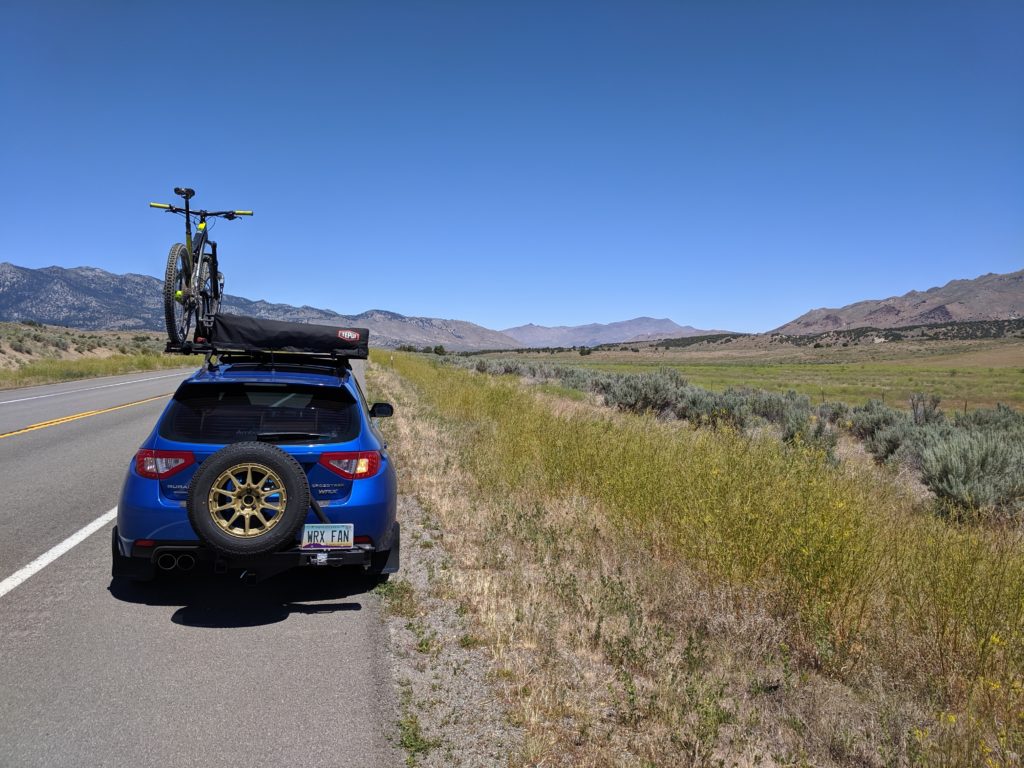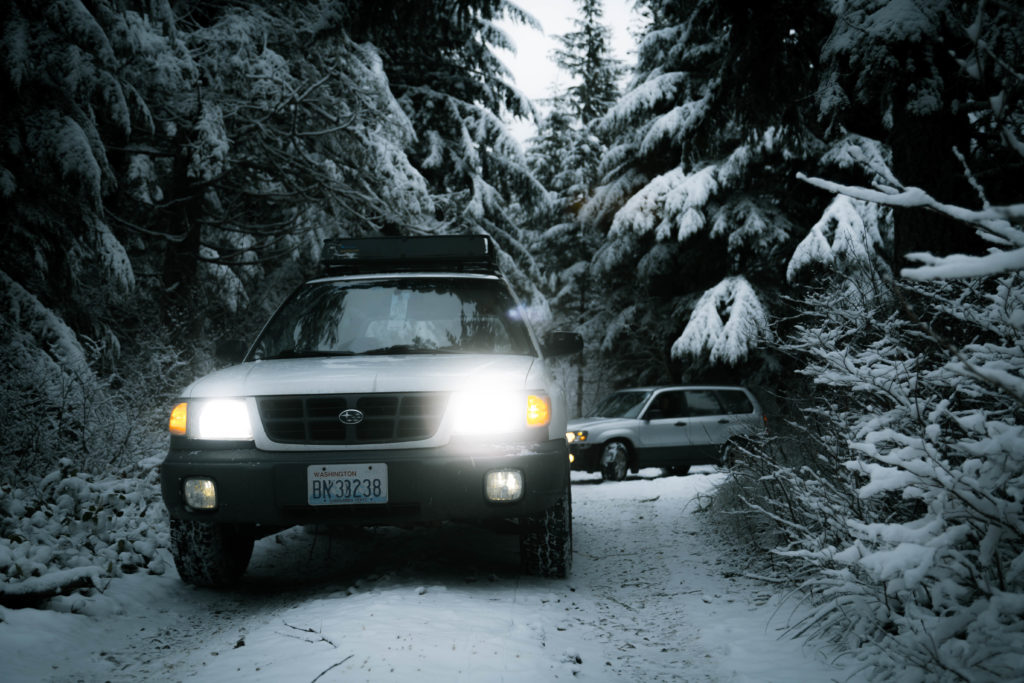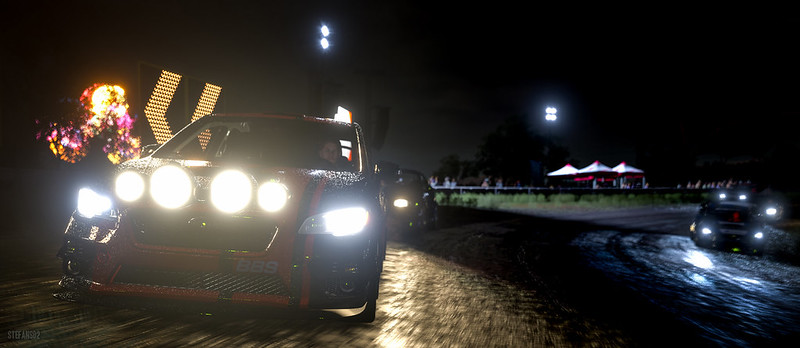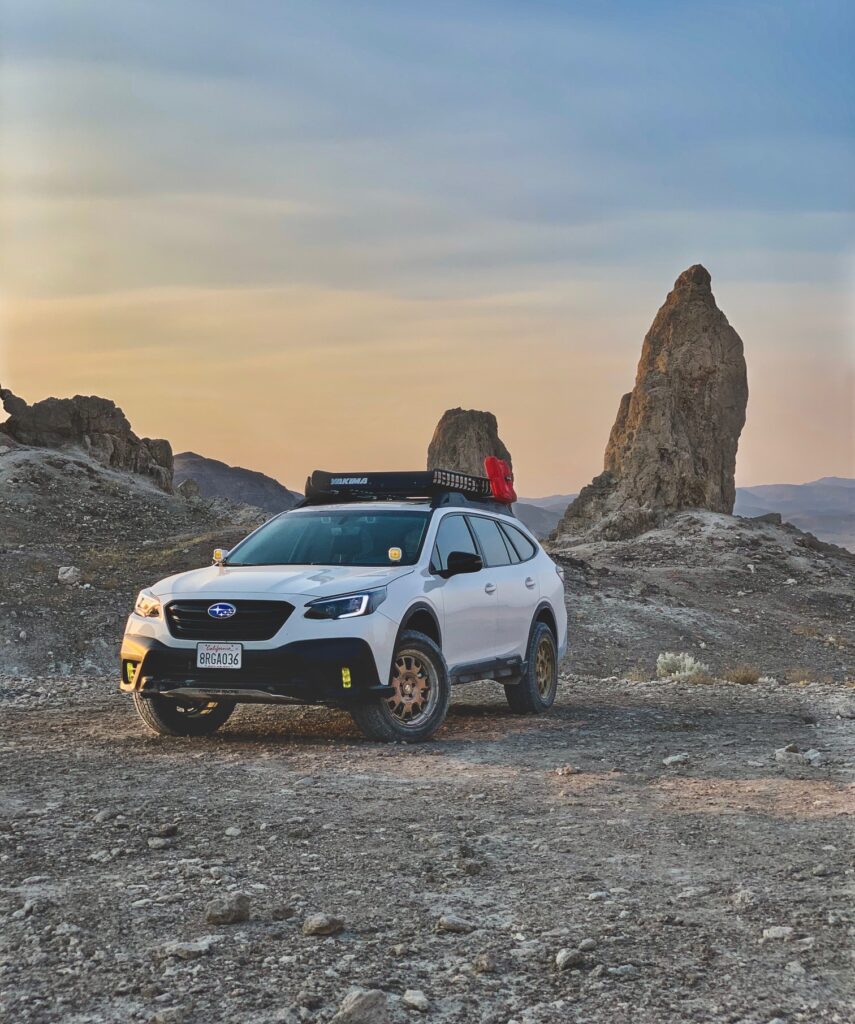
Fitting Off-Road Tires On Your Outback Is Possible And Can Actually Be Easier Than You May Think
By Ben Boxer
Last updated on April 26th, 2024
One of the best upgrades you can do to any vehicle for better off-road performance is a set of all-terrain or even mud-terrain tires.
With a stronger carcass and a much more grippy tread pattern, they can help vehicles safely navigate challenging trails and terrain. AT and MT tires are wildly popular with truck and Jeep owners. But what if you want to put a set of aggressive tires on your Subaru Outback? Yes, it is possible and yes even stock Outbacks can run a more heavy duty tire.
In this article we’ll go over the main things to look for in a tire, how big of a tire you can fit, and what modifications you will need if you plan on going with an even bigger tire.
Even though there are some really good options for stock sizing, some folks do want to go slightly larger than stock when they upgrade. We’ll show you what you need to prepare for if that is your goal.
Table of Contents
Benefits of Off-Road Tires
One of the biggest advantages of an all-terrain or mud-terrain tires is grip. They have much more pronounced tread “lugs” with wider voids between them that allow the tire to hold onto slippery surfaces much more effectively. Whether you’re on dirt, ice, sand, or slick mud, an off-road tire will dig in much better than the smooth all-season tires that likely came stock with your Outback.
Durability is another thing to keep in mind when tire shopping. Not just the tread life, but the ability of the tire to take a beating from sharp objects without being punctured.
I’ve helped multiple on the trail who got flat tires just from driving on gravel roads with their stock all-seasons. A solid all-terrain or mud-terrain will be able to handle those same roads with no issue. I’ve never gotten a flat from rocks or sharp pieces of wood on the trail while using AT and MT tires despite beating on them pretty hard.
Off-road tires also have a much thicker body that can handle being aired down. Airing down tires increases the contact patch and overall grip of the tire. For rocks, sand, and snow, dropping your tire pressure down to around 15psi can be a night and day difference. On my first serious snow wheeling trip, I kept getting stuck every 20 feet until a more seasoned off-roader said “hey what’s your air pressure? Drop it down to 8-10psi.” I followed his advice and didn’t get stuck again the rest of the day until I drove into a huge snowbank that was deeper than my doors. Aside from that, I was able to crawl out of anything with lower tire pressure.
If you try airing down a regular street tire, you may blow out the sidewall. They’re not made for being aired down and the sidewall can’t handle the added stress of being “flexed.”
Possible Downsides of Off-Road Tires
The benefits of a more aggressive tire are well documented. But what are the possible negative effects of installing them on a Subaru? If done correctly, you won’t experience many problems at all. However, these are a few of the things to keep in mind:
- reduced mpg
- less usable torque
- road noise
- possible fitment issues
- higher cost
A more durable tire is going to be heavier by nature. A thicker sidewall and body are what make them capable of handling abuse. But at the same time it’s what makes them heavier and harder for your vehicle’s engine and transmission to rotate. For this reason, you’ll experience slightly lower fuel economy and slower power delivery. The extent of this will depend on what size you choose to go with.
My Subaru only lost about 2 mpg’s after switching to a much heavier mud terrain tire that was 2 inches bigger than stock. But this number can vary wildly based on the specific setup of your vehicle. You also need to consider that adding heavy objects onto the roof, or cutting your bumper can have an effect as well. If you do these modifications at the same time as your tires, it can have a deceptive effect.
Road noise is just simply a part of owning off-road tires. If you’re sensitive to road noise, stick with a mild all-terrain and avoid mud-terrain tires.
Personally, I don’t mind the noise and I appreciate the extra performance. If you own a newer vehicle, road noise is not very bad inside the cabin. With recent advances in sound dampening, even a tougher mud-terrain still won’t be unbearable for most. But if you’re mainly commuting in your Outback, getting something overly aggressive may be less enjoyable for a daily driver.
If you stick with a stock size, fitment shouldn’t be an issue. However, if you’re like me and do things on the more extreme end, you may want to increase the overall diameter of your tire. With the more aggressive tread and thicker carcass, off-road tires are generally a tighter fit. But then if you size up, it only amplifies that issue. Just be ready to do some small modifications if you want to go bigger.
Installing Off-Road Tires: What’s Involved
Choose Your Size
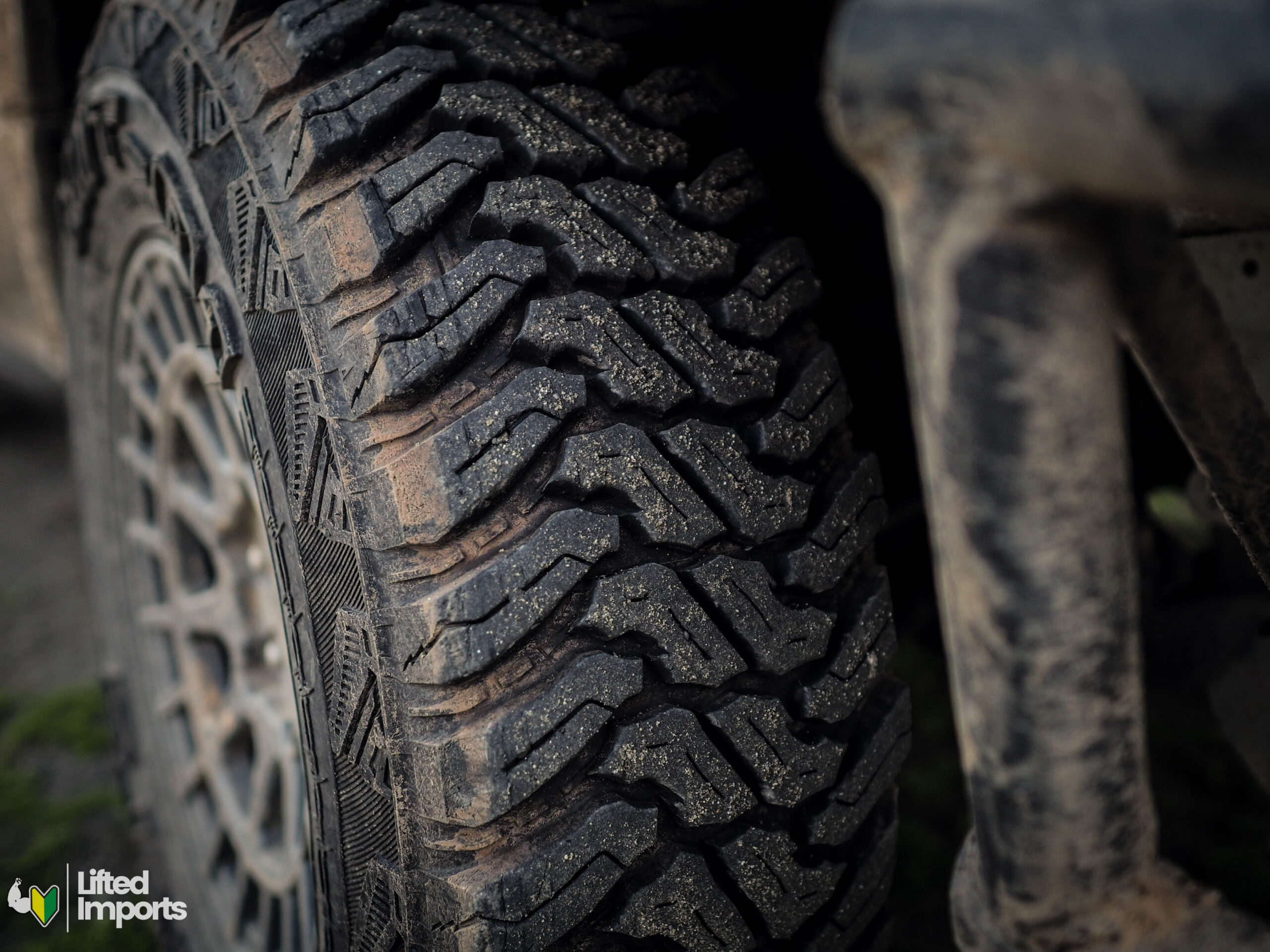
If you’re planning to stick with your stock size, there isn’t much you’ll need to do in order to install an aggressive tire. There are some great tires available in the stock Outback sizes that you can simply have installed on your current wheels. However, if you want to size up to a bigger tire, there are some things to keep in mind.
If you own a newer Outback, it likely came with a 225/65R17 or a 225/60R18 depending on trim level. If you want to go bigger than that, I usually recommend only going 1 inch larger than the stock overall diameter in almost all cases. But for those looking for something a bit more extreme, never exceeding more than a 2 inch increase in overall diameter is a good idea to keep down the weight and rotational mass.
Biggest Tire That Can Be Fit On Subaru Outbacks:
As for the biggest tire size that can be run on modern Outbacks comfortably, there are many people using a 245/65R17 tire along with a rally wheel on their car without a lift kit and haven’t had rubbing issues. But please keep in mind that there can be slight variation between different tire models and brands. While some tires fit with zero rubbing, another brand of the exact same stated size might have very light rubbing due to manufacturing differences. Please consider this during the process and be aware of it as you begin installation.
We pulled info from various threads on Reddit and from subaruoutback.org and found that this was the general consensus. Feel free to browse this thread to get an idea of what other people are using on their Outbacks.
If you plan to go with a bigger tire that’s closer to the 2 inch mark, you’ll need to install a lift kit and be willing to modify the vehicle permanently. The bumper will need to be cut and other things will need to be moved out of the way.
Here’s how our friend Ryan fit 30.5 inch tires on his 2019 Outback:
- Mud flaps had to be modified, replaced with Rally Armor, or removed (follow local laws regarding mud flaps)
- Front bumper had to be cut in order to accommodate the larger tire
- Pinch welds in the rear needed to be hammered back to avoid tire destruction
- Splash guards needed to be trimmed and massaged out of the way using a heat gun
Side note: most people will say “you don’t need a lift to run bigger tires.” And yes, that is true. However, installing a lift along with bigger tires will help keep them from contacting your fenders during full suspension compression.
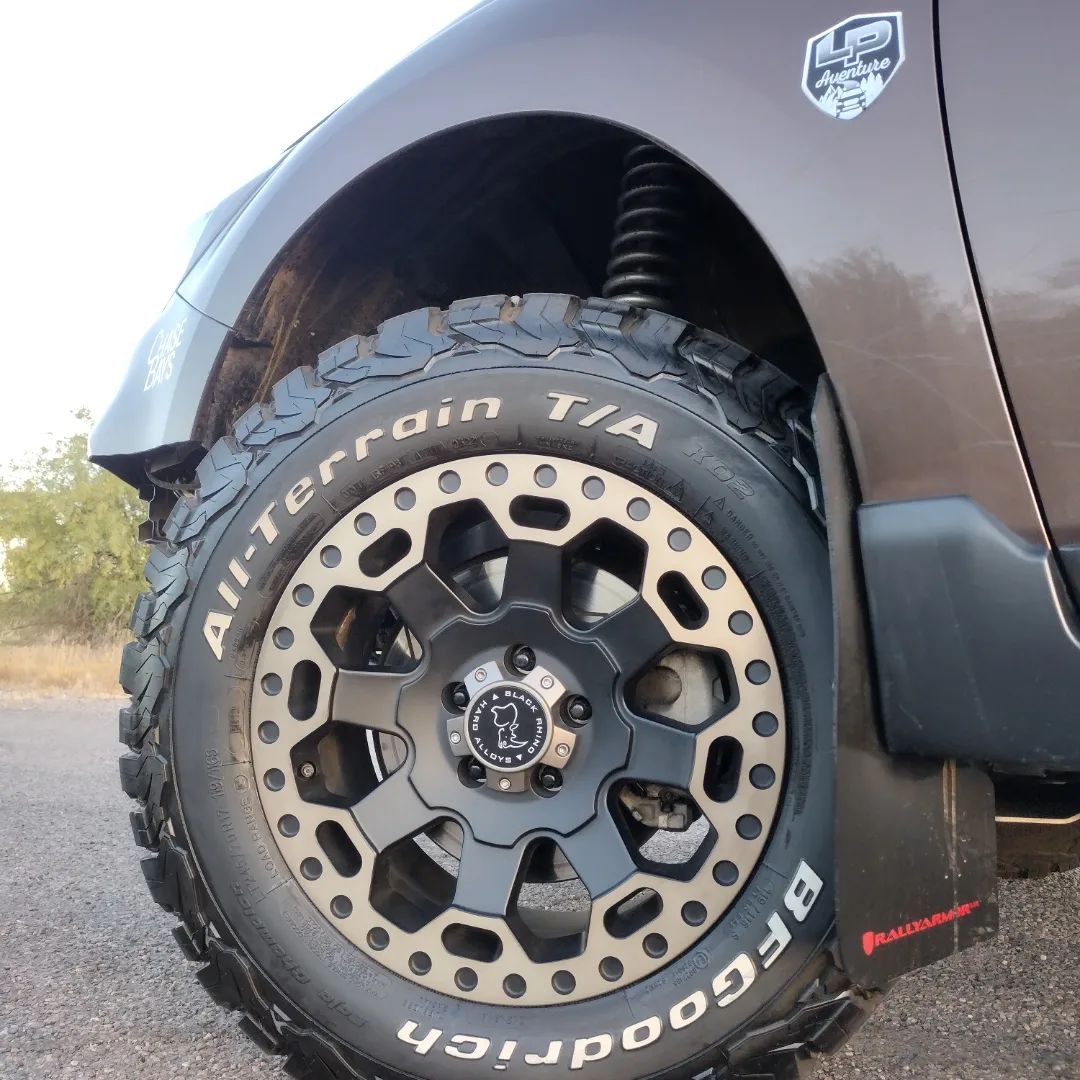
Select Something Light Enough For Your Vehicle
A huge consideration that needs to be made when choosing your next tire is the weight. We recommend sticking with a P-metric tire and avoiding LT tires when selecting a tire for Subarus. LT (light truck) tires are typically much heavier and are made for heavy trucks to handle towing and other serious demands. But with our vehicles, there’s not much of a need for this. Staying with a P rated tire will usually save you money and won’t bog down your Outback.
The Falken Wildpeak AT3W is a great example of an all-terrain tire that is available in both LT and P-metric ratings. When compared side by side in 265/65R18, this tire weighs 56lbs in the LT version but only 44lbs in the P-metric option. Not only is it lighter, but it costs $144 less per set. If you’re upgrading your Subaru’s tires, we definitely recommend finding the lightest option to help offset any power and fuel economy losses.
Purchase a Wheel That Compliments Your Tire Choice
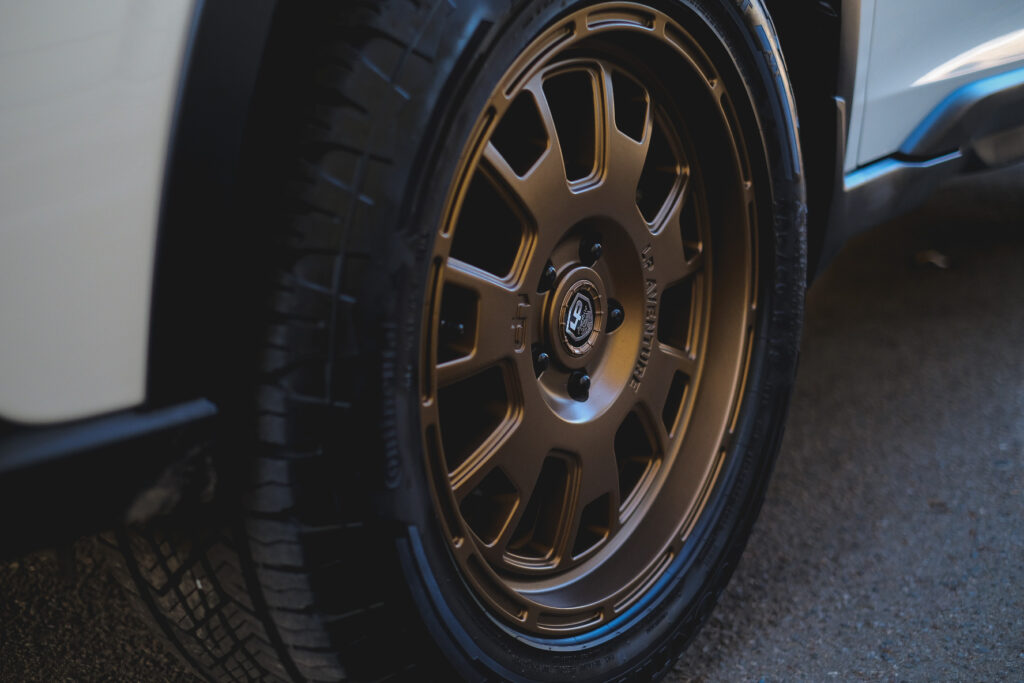
If you’re planning to stick with your stock wheels, you can upgrade to an off-road tire. But you’ll want to stay close to stock diameter since you can run into clearance issues with your suspension as previously mentioned. If you go too big on stock wheels, you may have issues with the tire contacting the front strut perches. For this reason, we recommend not going much more than a half inch in overall diameter bigger than your stock tire on OEM wheels. We’ve personally seen multiple people running 29.1 inch tires (235/60R18 and 235/65R17 are both popular) with no issues on their stock 2018-2022 Outback wheels.
If you want to go bigger than a 29 inch tire, we suggest going with a rally style wheel like a Method, Motegi, Black Rhino, or another wheel that has a more aggressive offset to help avoid clearance problems. Wheel offset is a measurement of how far away the wheel sits from the hub. We typically look for something with at least a +40mm offset when installing aggressive tires (note that the lower the number, the further the wheel sticks out.) Rally wheels also have a high-clearance barrel design that allows for bigger brake accommodation than OEM wheels. So if your plan is to size down to a 15, 16, or 17 (depending on your stock brake setup) a good aftermarket wheel should help a lot. We recommend taking measurements before making a final purchase decision.
Popular Off-Road Wheels For Subaru Outback
Being Prepared to Make Modifications
There are two types of people in the off-road world: people who want to casually drive trails and not make permanent mods to their car, and then people who genuinely do not care to cut, hammer, and trim anything in the way of fitting larger tires.
If you’re the type of person who only wants to casually upgrade their car, we suggest sticking with a mild tire size upgrade like either a 235/65R17 or 235/60R18 on stock wheels, or a 29.5 inch tire on an aftermarket wheel. This will keep you from running into any issues that require cutting. The only modifications you’ll need to consider are aftermarket mud flaps, and possibly using a heat gun to massage your fender liners out of the way since your tires may rub at full lock.
Now if you’re wild like us, you might want to jump up to something like a 30-30.5 inch tire. Doing this is not recommended and we are hesitant to even explain how to do it. But if you really don’t care about your car’s appearance or resale value, it can be done. You’ll have to cut your sideskirts, trim your bumper, and do lots of massaging with a heat gun or blow torch. In some cases, it may even be required to use a mini sledge to pound the fender pinch welds out of the way. We don’t have to tell you that at this point that you might as well buy a 4×4. But that’s not why you’re here. You’re here to have fun and do silly things to your Subaru.
Making The Choice Between All-Terrain & Mud-Terrain Tires
There is no hard and fast rule for this. However, I have a very simple formula that I use when I’m picking tires for a lifted Subaru. If the car in question is going to be used 20-40% off-road, we suggest an all-terrain tire. If you’re going to drive it 50% or more on trails, then we recommend a mud-terrain. Again, that’s just our personal preference. But we think it works well and makes a lot of sense. If you fall outside or in between those percentages, feel free to use your own discretion when choosing between AT and MT tires.
Related: Everything you need to know about different tire types
At the end of the day, each individual has to weigh the pros and cons of upgrading to an off-road tire. But we hope this article gives you more confidence as you move towards that decision. As always, we suggest working with a trusted mechanic when performing modifications to any car. The content of this article is for educational purposes only and we are not liable for any negative outcome someone may experience after modifying their Subaru.
Other Articles You May Find Helpful:
As an Amazon Associate we earn from qualifying purchases

